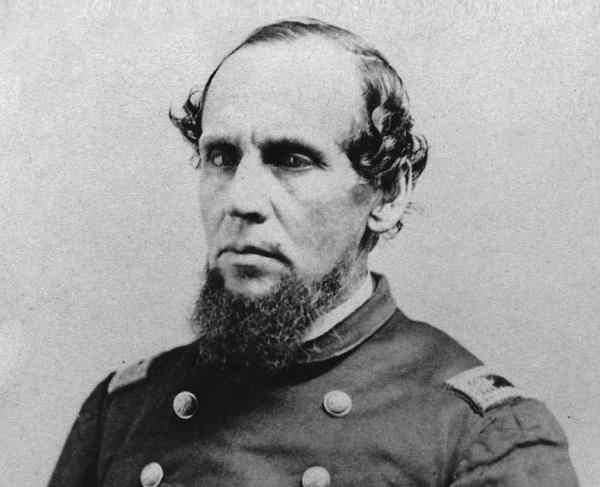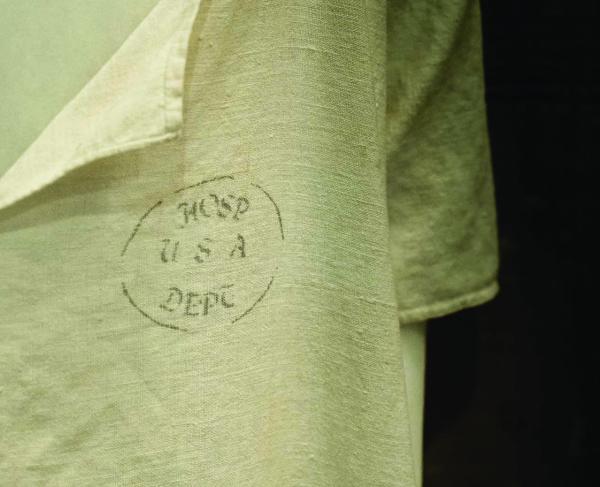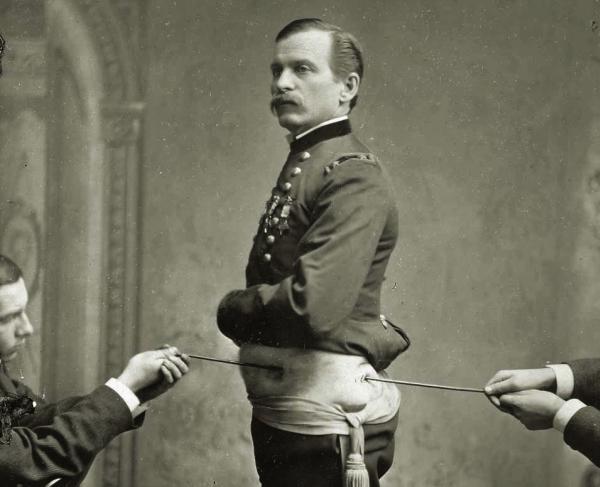
"Satterlee U.S.A. General Hospital, West Philadelphia"
Originally named West Philadelphia Hospital and renamed after a veteran of the Mexican American War, Dr. Richard Sherwood Satterlee, Satterlee General Hospital was the largest Union hospital during the Civil War. Located in Philadelphia, Pennsylvania, the hospital was built in 1862 by the order of Union Surgeon General Dr. William A. Hammond. Dr. Hammond specifically designed the hospital in a pavilion-style, providing for open ventilation to prevent diseases. Dr. Isaac Israel Hayes was placed in charge of Satterlee, who was previously an explorer of the Arctic Circle in 1853 and 1860. Satterlee General Hospital cared for over 50,000 sick and wounded soldiers during the Civil War. Operating as a micro-city in the greater Philadelphia region, Satterlee General Hospital cared for Union soldiers primarily wounded in the battles of Second Manassas and Gettysburg.
In 1862, Dr. Isaac Israel Hayes immediately got to work on constructing this new hospital based on Hammond's instruction. Hayes’ experience in dealing with high stress and fast-paced environments from expeditions to the Arctic Circle made him the natural choice for Hammond to be the head of Satterlee Hospital. The hospital was constructed in West Philadelphia along Spruce and Pine streets. The area surrounding Satterlee was in a wooded and suburban area that was believed to promote healing due to cleaner air away from the heart of the city. As one of America’s leading medical cities, Satterlee General Hospital had the luxury of having some of the most esteemed surgeons, doctors, and nurses on hand to care for sick and wounded patients. Dr. Hayes also partnered with the Roman Catholic Sisters of Charity to provide more care to patients. The nuns would help with general maintenance and upkeep of the facility, changing bed sheets, dressing wounds, emptying chamber pots, and offering emotional support to dying soldiers. One of the most important practices that Hayes instituted at Satterlee was avoiding amputations. Dr. Hayes believed in keeping soldier’s bodies whole due to his Quaker faith. This policy likely saved many patients from unnecessary infection and shock and led to fewer deaths as a result.

The organization of Satterlee General Hospital was a modern marvel in the Civil War. The hospital operated like a small city, with 33 wards housing a total of 2,500 beds in various tents and wooden structures. The hospital sat on sixteen acres of land, and at its peak, it housed a total of 4,500 soldiers at a single time after the Battle of Gettysburg. In 1864, Satterlee had a 14-foot wall constructed around it and featured more than just hospital wards. It also housed a barbershop, a clothing store, a dispensary, a library, a post office, a reading room, a carpenter shop, and a printing office that printed the hospital’s own newspaper The Hospital Register. There was also an observatory where the local band performed for sick and wounded soldiers. Satterlee had three kitchens within its walls, and it was reported that Satterlee alone consumed 800,000 pounds of bread, 16,000 pounds of butter, and 334,000 quarts of milk in one year. In total, Satterlee General Hospital treated and cared for approximately 50,000 sick and wounded soldiers over the course of three years. Out of those 50,000, only about 1,100 patients died in Satterlee General Hospital to disease and wounds- a remarkable and astonishingly low mortality rate in an era before Germ Theory.
After the Confederate surrender at Appomattox Court House on April 9, 1865, Satterlee Hospital quickly began to decline in usefulness. On August 3, 1865, Satterlee General Hospital officially closed, marking an end to one of the most successful military hospitals in the United States. The buildings of the old Satterlee General Hospital were destroyed in the 1890s. Following the destruction of the buildings and as Pennsylvania became an industrial center, the land where the former Satterlee Hospital stood was made into residential housing, with little remains of the micro-city that once stood. Clark Park in Philadelphia is the only surviving piece of Satterlee General Hospital, and the park has a memorial dedicated in 1916 to the Union soldiers that were treated at Satterlee after the Battle of Gettysburg. Satterlee General Hospital was an integral part to the Union Medical Department. It was the forerunner of hospital organization in the Union and paved the way for future military hospitals to be constructed in a similar manner.
Further Reading:
- History of the Satterlee U.S.A. Gen. Hospital at West Philadelphia, Pa. : from October 8, 1862 to October 8, 1863 by Nathaniel West
- "Notes on Satterlee Military Hospital, West Philadelphia, Penna. From 1862 Until its Close in 1865. From the Journal kept at the Hospital by a Sister of Charity" from Records of the American Catholic Historical Society of Philadelphia, vol. 8, no. 4, 1897, pp. 399–449. Edited by Sara Trainer Smith.


